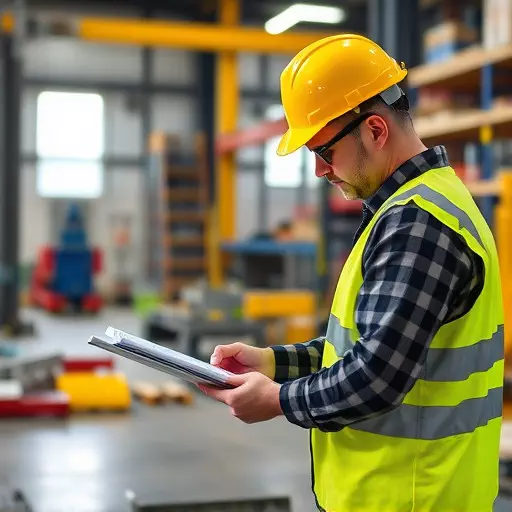Noise level assessments by specialized onsite EHS services are vital for workplace safety audits, aiming to identify and mitigate noise hazards. These evaluations involve advanced tools to measure sound pressure, analyze work areas, and recommend tailored solutions. By quantifying noise intensity and duration, employers can implement effective controls like engineering, administrative, or personal protective equipment, protecting workers' hearing health and fostering safer, more productive environments while ensuring compliance with regulations through regular audits.
Noise level assessments are an indispensable aspect of comprehensive onsite Environmental Health and Safety (EHS) services. They play a pivotal role in identifying potential hazards and ensuring worker well-being in diverse work environments. This article delves into the significance of these assessments, exploring their integration with workplace safety audits. We will guide you through effective strategies for hazard identification and risk assessment, empowering professionals to mitigate noise-related risks and foster safer, healthier workplaces.
- Understanding Noise Level Assessments: A Crucial Component of Onsite EHS Services
- The Role of Workplace Safety Audits in Identifying and Mitigating Noise Hazards
- Hazard Identification and Risk Assessment: Strategies for Effective Noise Management
Understanding Noise Level Assessments: A Crucial Component of Onsite EHS Services
Noise level assessments are a vital component of comprehensive onsite EHS (Environmental Health and Safety) services. These evaluations play a crucial role in ensuring workplace safety audits by identifying potential hazards and mitigating risks associated with noise exposure. By measuring sound pressure levels, professionals can determine whether working conditions adhere to established safety standards and regulatory guidelines.
During these assessments, experts consider various factors, such as the type of equipment, proximity to noisy machinery, and the duration of exposure. This data is then used to conduct hazard identification and risk assessment, enabling employers to implement effective noise control measures. Whether it’s through engineering controls, administrative controls, or personal protective equipment, these strategies help reduce noise levels, protecting workers’ hearing health and fostering a safer, more productive work environment.
The Role of Workplace Safety Audits in Identifying and Mitigating Noise Hazards
Workplace safety audits play a pivotal role in identifying and mitigating noise hazards within industrial settings. These comprehensive assessments, often conducted by specialized onsite EHS (Environmental Health and Safety) services, involve meticulous inspections and evaluations of various factors contributing to noise exposure among employees. By employing advanced measurement tools and industry-specific knowledge, safety auditors can accurately quantify noise levels and pinpoint sources of potential harm.
During these audits, expert analysts thoroughly examine work areas, equipment operations, and employee tasks to ensure compliance with established noise control regulations. They document findings, identify risks, and recommend tailored solutions to reduce noise exposure below acceptable limits. Regular workplace safety audits not only help in meeting regulatory standards but also contribute to fostering a culture of safety by empowering employees and management alike to take proactive measures for noise hazard mitigation.
Hazard Identification and Risk Assessment: Strategies for Effective Noise Management
Noise exposure in the workplace can pose significant health risks to employees, making hazard identification and risk assessment crucial steps in effective noise management. Onsite EHS services play a vital role here by conducting thorough audits and evaluations to pinpoint potential noise hazards. This process involves examining various sources of noise, such as machinery, tools, or construction activities, and analyzing their intensity and duration. By understanding these factors, employers can take appropriate actions to mitigate risks.
A structured approach to hazard identification includes identifying the sources, evaluating the levels, and assessing the potential impact on workers’ health over time. This strategic process forms the backbone of a comprehensive workplace safety audit, ensuring that noise-related risks are addressed proactively. Regular audits, coupled with data analysis, enable organizations to implement effective control measures, such as providing personal protective equipment or reconfiguring work areas, thereby fostering a safer and healthier work environment.


